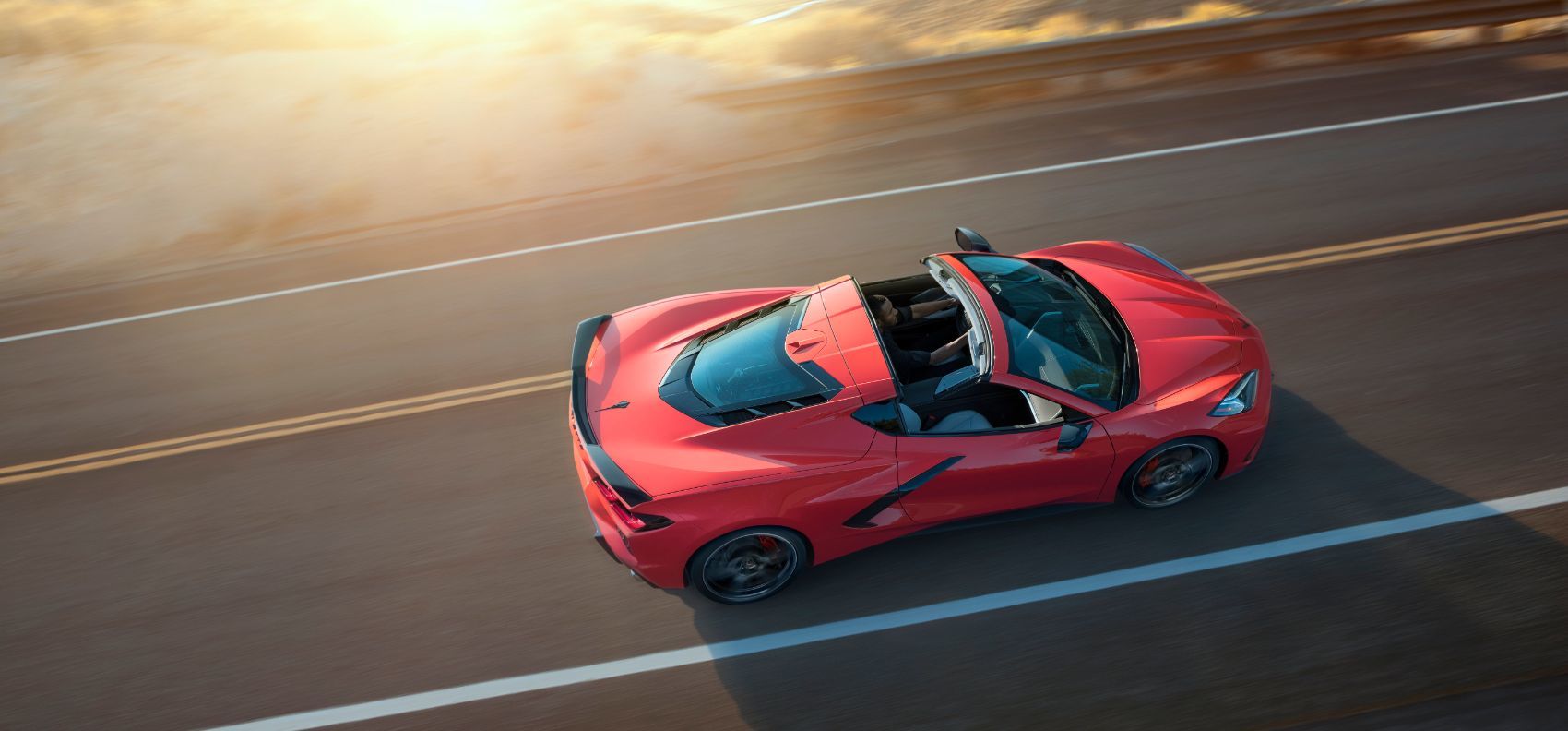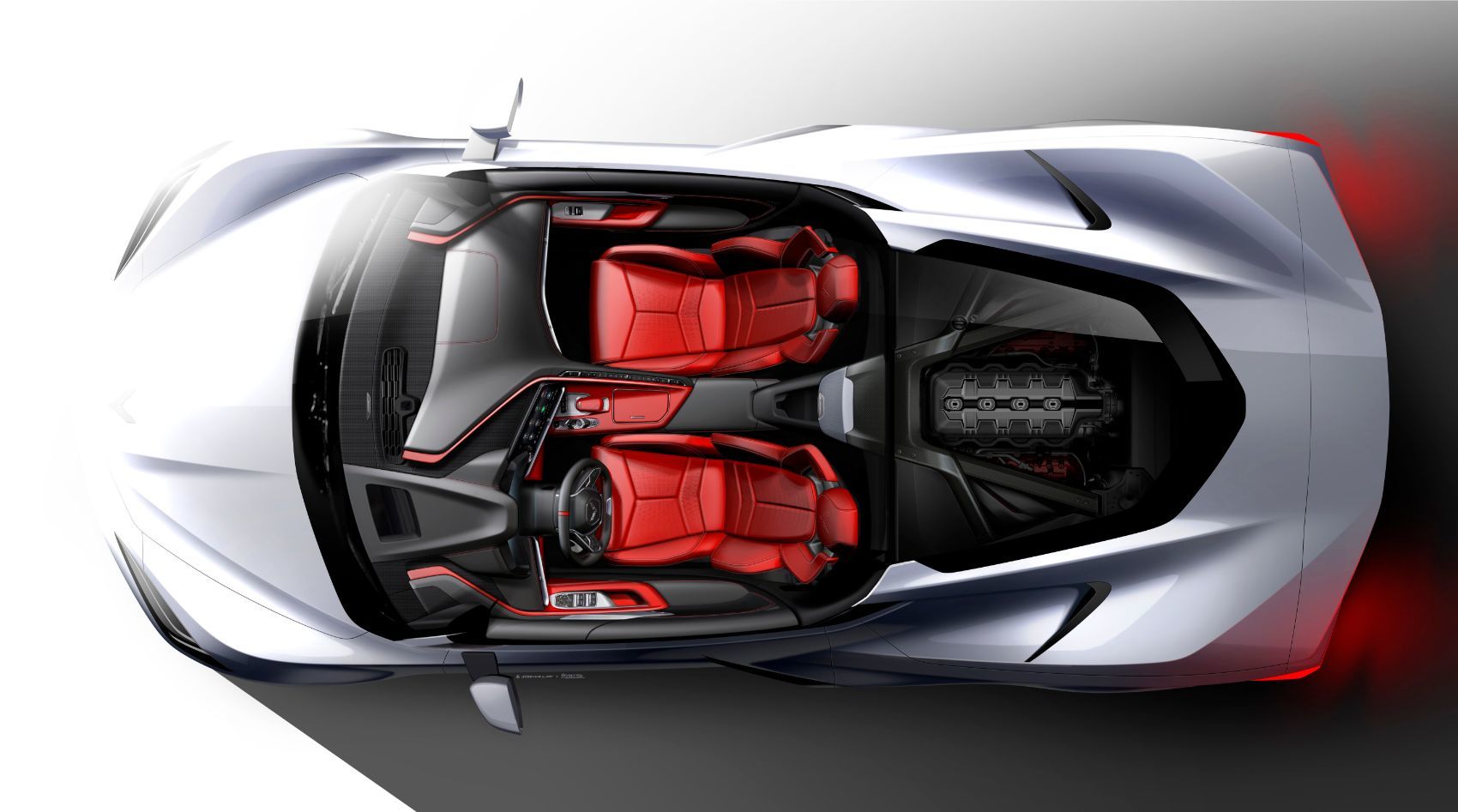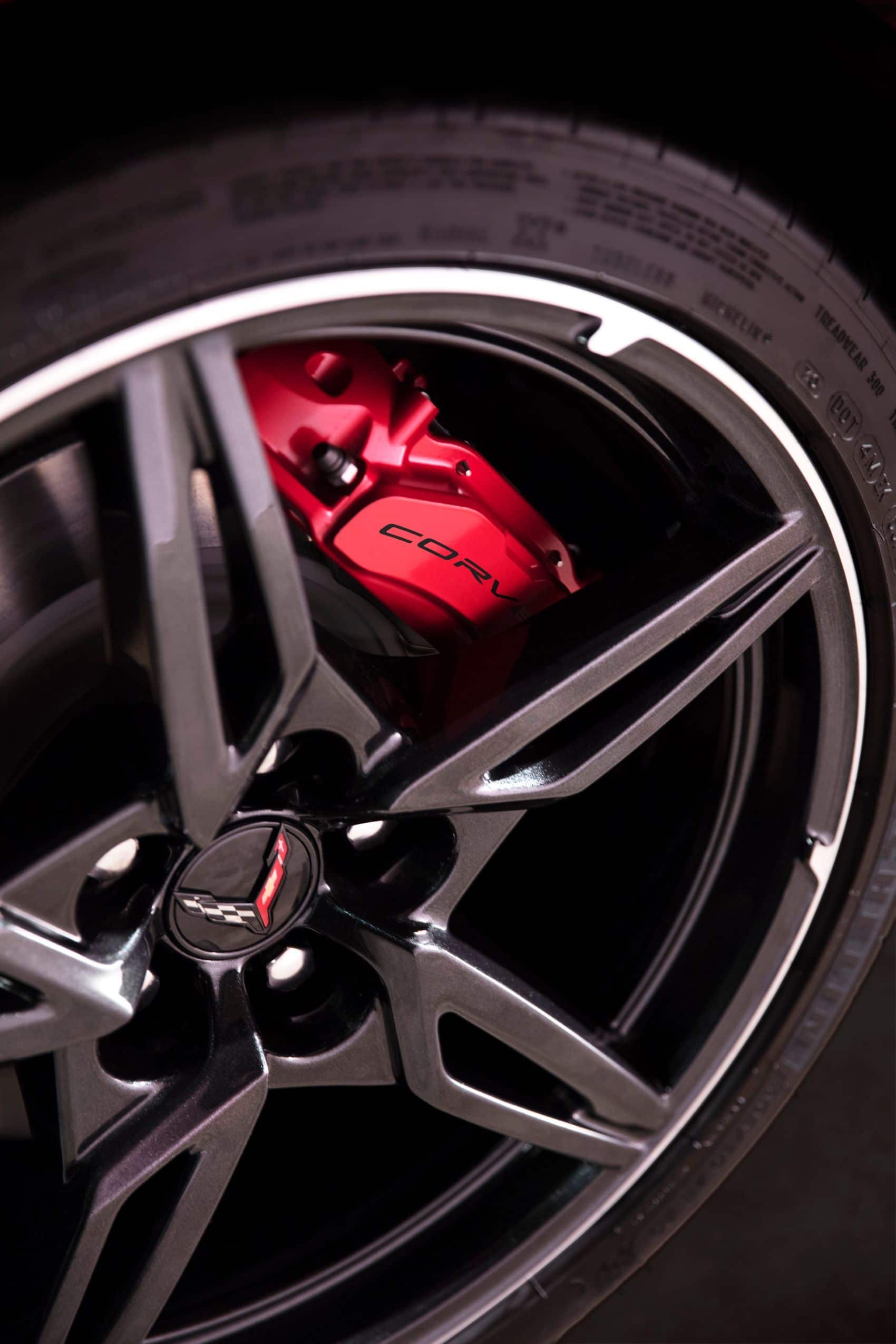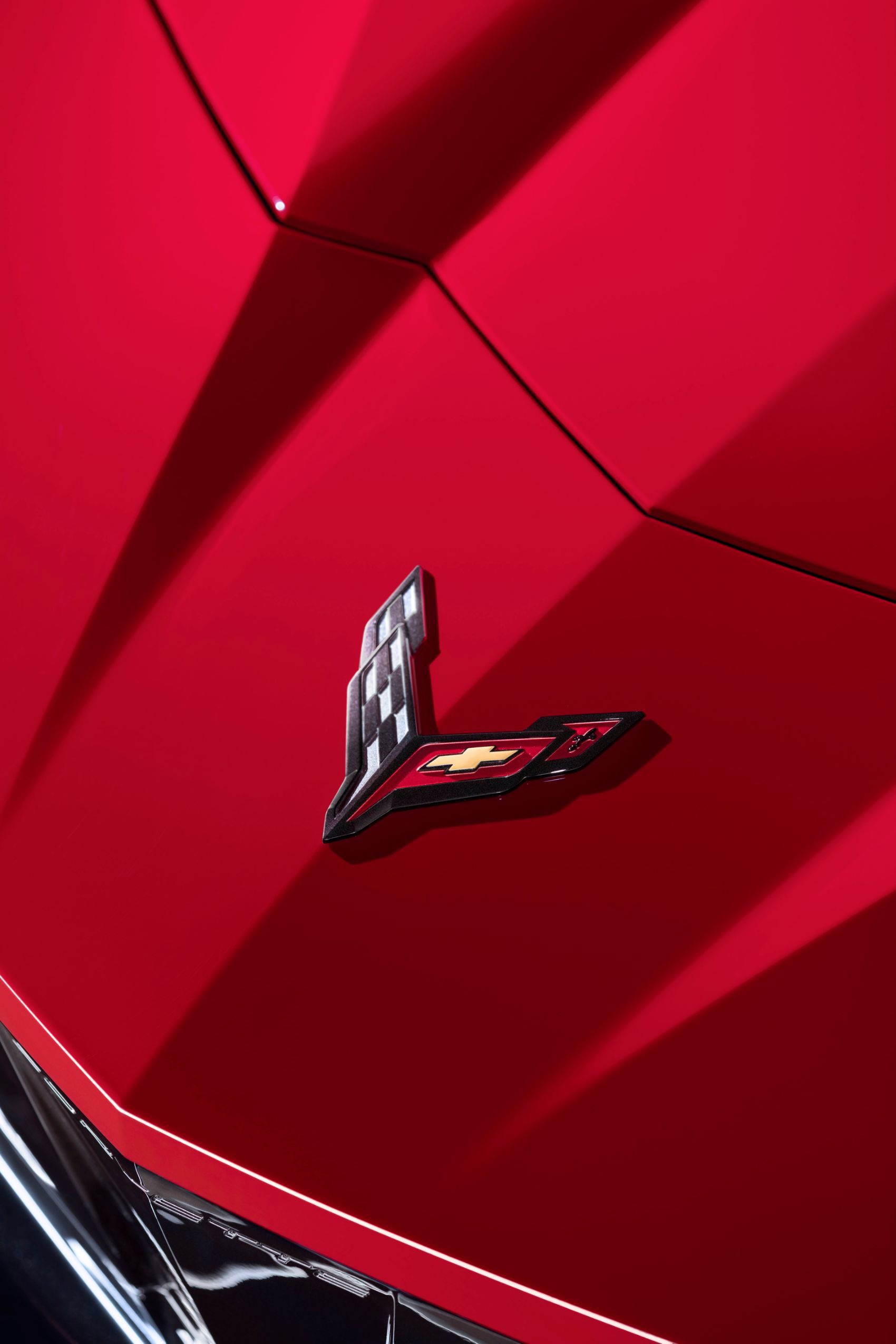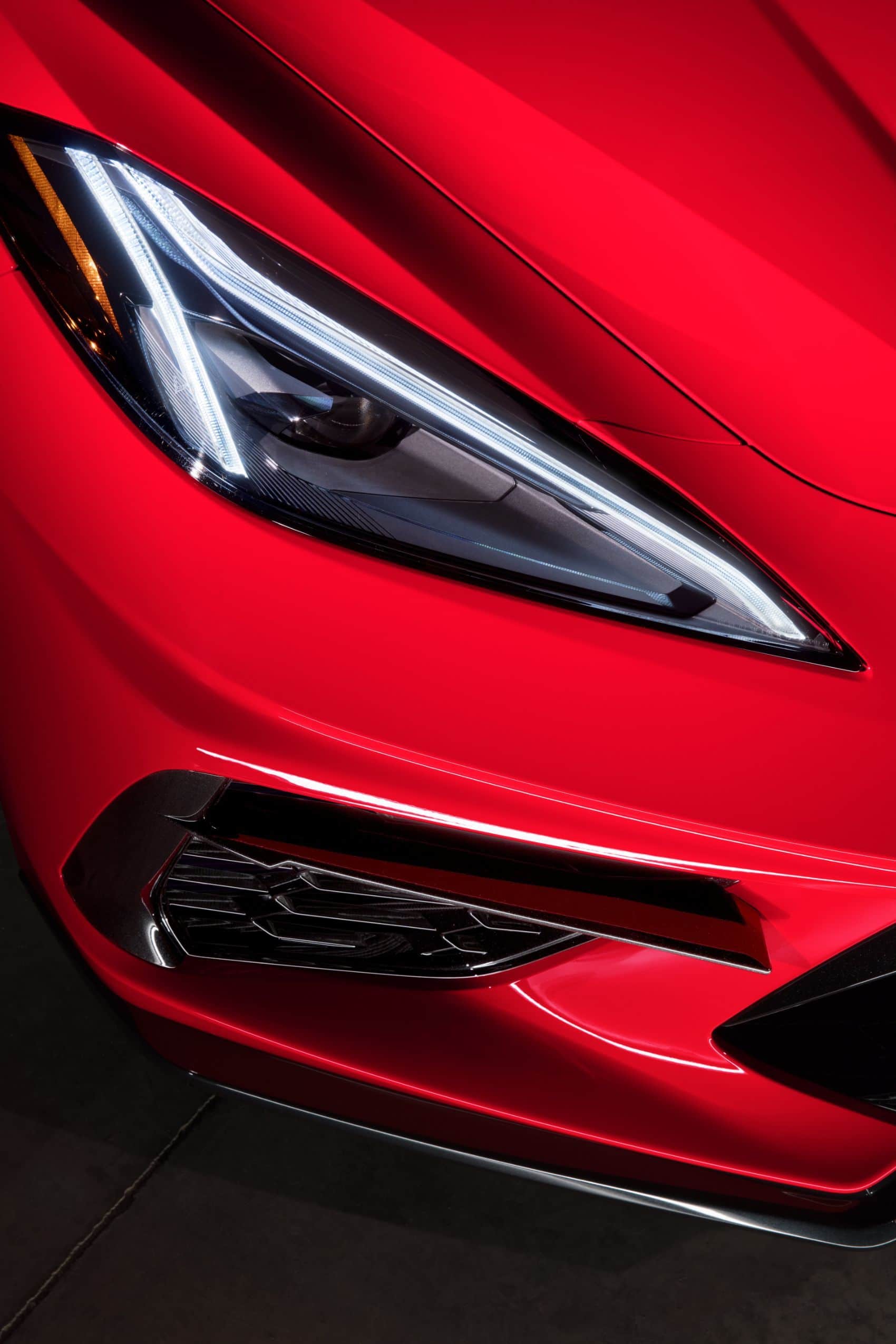- A special “backbone” lowers the 2020 Corvette Stingray’s center of gravity.
- The backbone helps make the Corvette more versatile for everyday driving.
- Chevy employed a material manufacturing strategy known as “Bedford Six.”
The arrival of the mid-engine Corvette Stingray for 2020 is a huge deal. By moving the engine where it belongs, GM has finally stepped onto the world stage of high-end supercars. And they have done so in a manner befitting one of the largest and longest-running manufacturers on the planet. In a way, that it’s taken so long is rather puzzling. GM is embarrassingly rich in resources. And not just development cash, although they do have a ton of that. They have test facilities, computer farms, and buildings upon buildings full of whip-smart engineers who would love to get off the chain and show the world what “Yankee Ingenuity” means.
And indeed, GM has shown everyone else how it’s done, from the proverbial clean sheet of paper to the final $60,000 starting MSRP.
2020 Chevy Corvette Stingray: Essential Foundations
The 2020 Corvette’s structure is built around its backbone: the center tunnel. This is not a particularly new idea. Colin Chapman designed a bunch of Lotuses (and even the DeLorean) around a center backbone design. It creates a light, stiff structure as the foundation for everything else in the car. The engine and transaxle sit solidly in the middle of the backbone, and the suspension system hangs off the ends. The rigidity allows the suspension to perform as it should, and not be burdened by chassis flex. GM says by “removing unwanted body compliance,” the new Corvette offers better lateral grip while also reducing vibration at higher speeds or on longer road trips.
The backbone design helps ingress and egress for a mid-engine vehicle too. There’s no need for giant rocker panels and sills to handle structural loads, making it easier to enter and exit the vehicle; unlike, say, what you find on a Lambo. Since the backbone lowers the center of gravity, stability should be excellent and handling outstanding.

It’s The Little Things
The Corvette’s beloved roof panel (standard) even benefits from the new mid-engine design. Just like before, you can store it in the rear trunk. Easy-peasy! Speaking of storage, up front there’s a trunk (frunk?) that fits an airline-spec carry-on and a laptop bag. The other trunk out back handles two, fully-loaded golf bags. In other words, the 2020 Chevy Corvette Stingray is even somewhat practical.
The backbone structure, combined with some smart packaging, improves cabin comfort. It gets you an additional inch of rearward seat travel and nearly double the reclining angle. The patriotic cherry on top is how the Stingray will be available in both left- and right-hand drive variants, a first for Corvette.
Mixed Material Strategy
Technical flourishes and cool engineering abound all over the new Corvette Stingray. GM’s “mixed-material strategy,” something they employed for the new Silverado, is found in key areas here as well. For example, the 2020 Corvette’s main structure comprises six, high-pressure diecast aluminum parts, known as the Bedford Six. These six elements come from GM Powertrain in Bedford, Indiana. The point here is to minimize the number of joints within the vehicle, making for a stiffer structure. This, in turn, increases handling and cornering capabilities, while lowering vibrations, noise, and harshness.
Other trick pieces include the carbon fiber curved rear bumper beam, an industry-first according to GM. The front and rear trunk tubs and dashboard are molded from an ultra-lightweight “float” draw, which GM says derives from fiberglass and a proprietary resin. The geeks from Bowling Green call it a “float” because it’s light enough to actually float on water. They use it with other fiberglass and carbon fiber components to reduce the 2020 Corvette Stingray’s mass.
2020 Chevy Corvette Stingray: Ride & Handling
Gone are the days when the brutish power of a Corvette engine had to compensate for the handling deficiencies. Oh sure, that bestial potential is still there, deliciously so, but thanks to the mid-engine layout, you can now have all you power cake and road-eating handling too. Putting the lump of the engine in the middle allows for shorter, straighter, and stiffer steering; couple that with an updated electronic steering system, and the inputs for the driver should feel instantaneous. The new seating position places the car’s center of gravity close to the driver’s inside hip, so it feels as if the thing is literally turning around you.
Believe me, I have driven cars like this before. Your perception of vehicle handling and responsiveness is mind-blowing.
Other ride and handling upgrades include a revised steering ratio from 16.25:1 to 15.7:1 and new eBoost brakes. The Michelin all-season tires can corner at nearly 1G (for an all season tire!), which GM says is a first. There is an uber-cool and useful front suspension lift that gets you more ground clearance to the tune of +40 mm at the front bumper. Push a button and whoosh, 2.8 seconds later you’re protected against ruts, potholes, steep driveways, and speed bumps. And check this out: the suspension lift works automatically through the GPS to remember up to 1,000 locations in advance.
Z51 Performance Package
Yes, there will be a Z51 Performance Package. Oh, wait, you didn’t realize everything I was talking about was for the base model? Indeed that is the case. It gets better and better from here, my young Padawan.
The Z51 Performance Package brings a bunch of goodies to an already great party: performance suspension with manually-adjustable threaded spring seats; larger brake rotors with Z51 logos on the calipers; better cooling and a specific axle ratio; new front brake cooling inlets and a performance exhaust. There’s also an electronic limited-slip differential integrated into the transaxle for better torque modulation. The front splitter and open, two-piece rear spoiler give you a combined 400 lbs.of downforce.
And finally, GM’s trick Magnetic Ride Control 4.0 is available. In short, this thing is a beast!
Corvette Visualizer
Production of the 2020 Chevy Corvette Stingray begins at Bowling Green Assembly later this year. Additional pricing and packaging information will be available closer to launch. When it hits the market, the new Stingray will come in 12 exterior colors; offer six interior color themes and seat belt colors, with two optional stitching packages. If you simply cannot wait, a new digital tool, the Corvette Visualizer, lets you design your dream mid-engine Vette in vivid detail.
Nationwide Tour
The 2020 Chevy Corvette Stingray will embark on a cross-country dealership tour leading up to its on-sale date. Corvette specialists, along with the vehicle and numerous other displays, will stop at over 125 dealerships nationwide, as well as major consumer events.
Tony Borroz has spent his entire life racing antique and sports cars. He is the author of Bricks & Bones: The Endearing Legacy and Nitty-Gritty Phenomenon of The Indy 500, available in paperback or Kindle format. Follow his work on Twitter: @TonyBorroz.
2020 Chevy Corvette Stingray Gallery
Photos & Source: Chevrolet.
The 2020 Chevy Corvette Stingray is the mid-engine Vette enthusiasts have been waiting for. Here is an in-depth look at how the car is designed.








